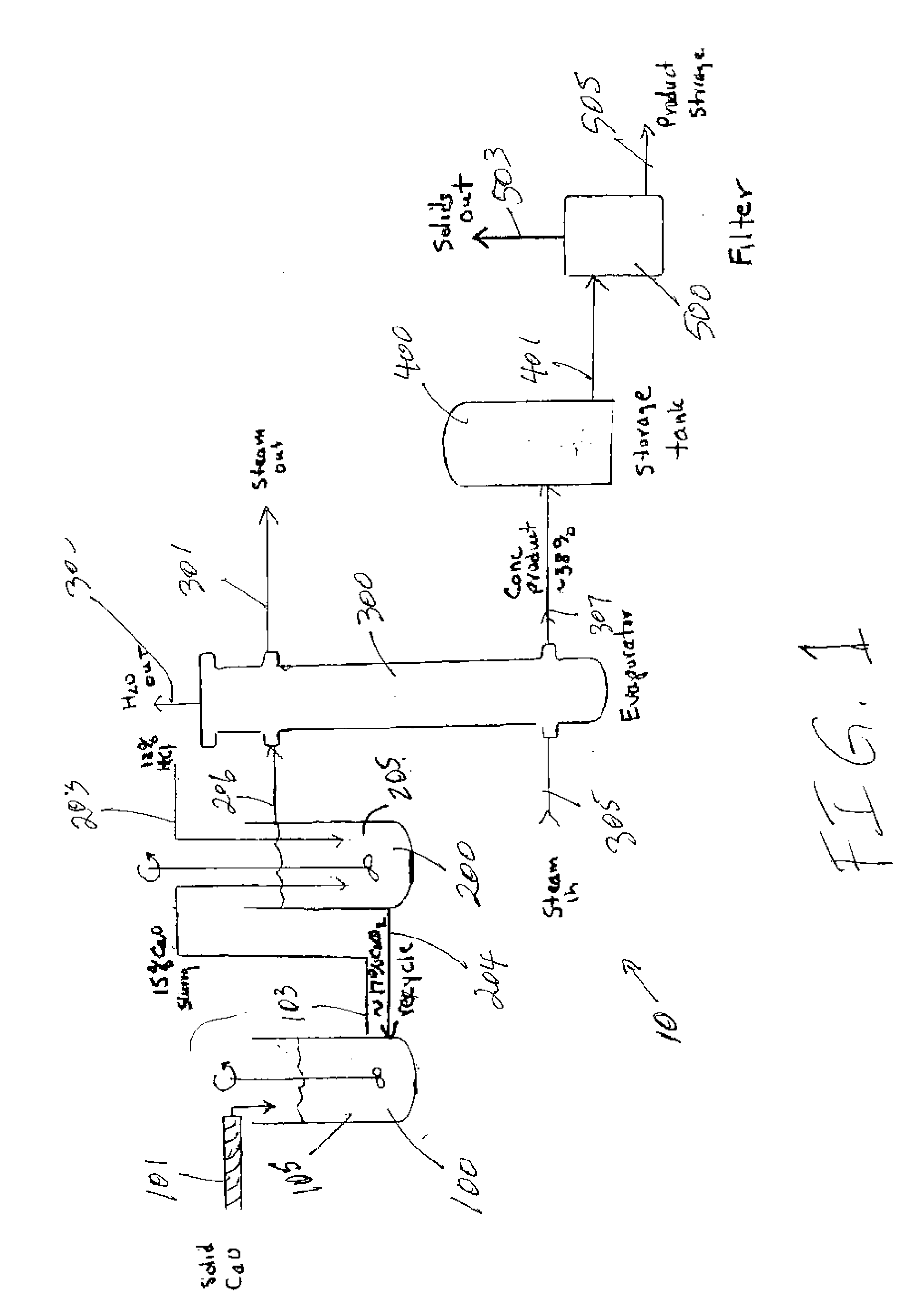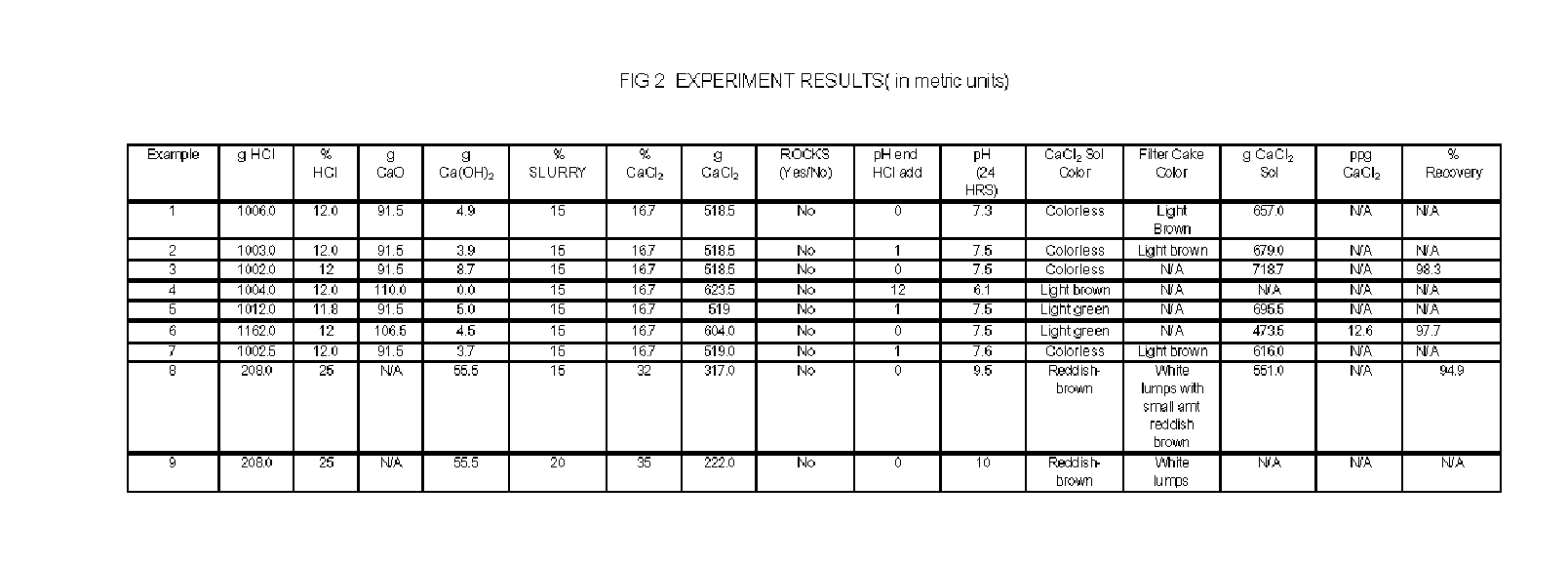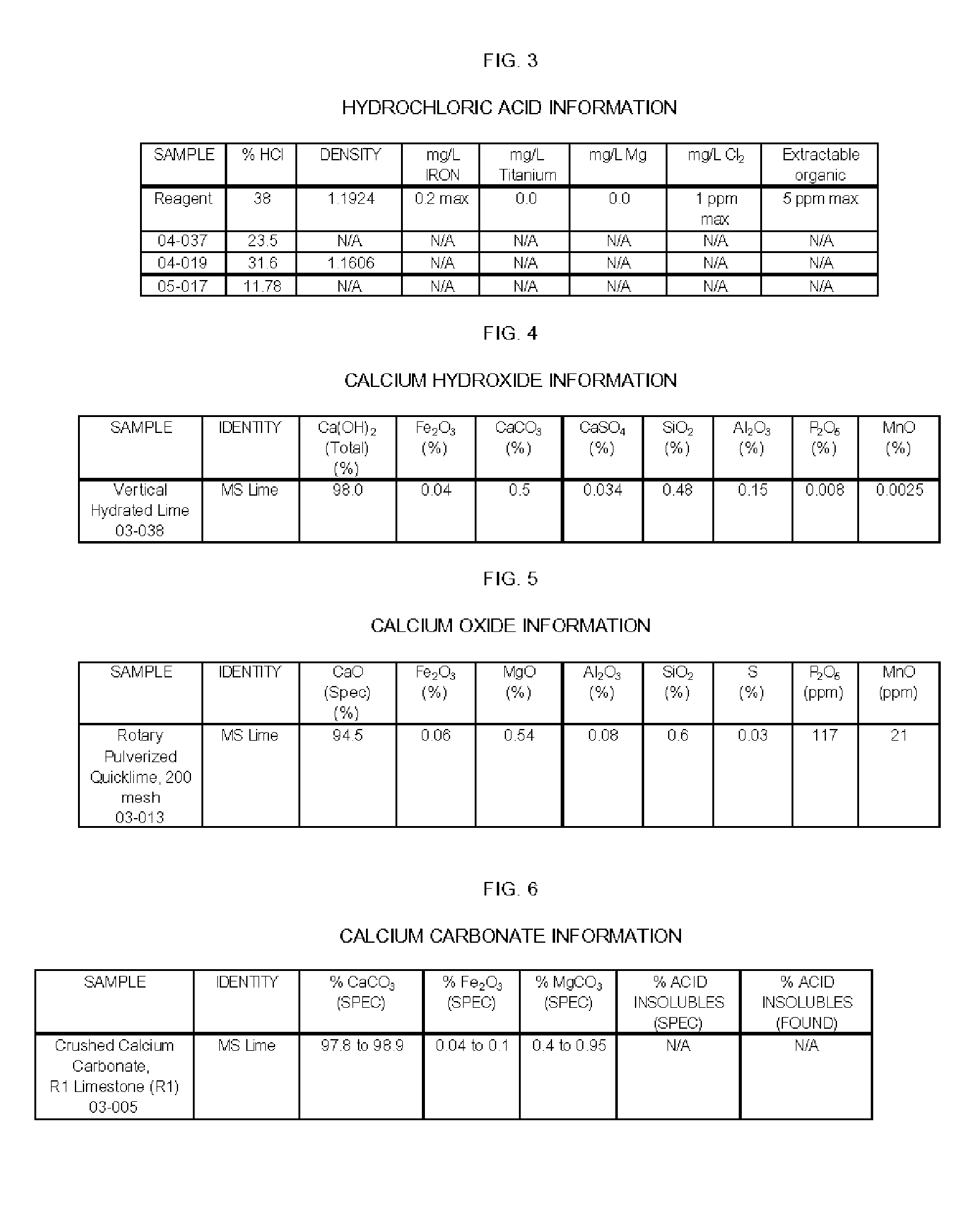Apparatus and Methods For Producing Calcium Chloride, and Compositions and Products Made Therefrom
a technology of apparatus and methods, applied in the direction of chemistry apparatus and processes, inorganic chemistry, ferrous oxides, etc., can solve the problems of unsatisfactory method of calcium chloride production, energy and labor, and inconvenient production of conventional apparatus and methods for calcium chloride, so as to reduce the evaporation load
- Summary
- Abstract
- Description
- Claims
- Application Information
AI Technical Summary
Benefits of technology
Problems solved by technology
Method used
Image
Examples
example 1
[0054] Step One: A 15.0% slurry of calcium oxide in 16.7% calcium chloride solution was prepared. The mixture was vigorously stirred. The amount of calcium oxide added (91.5 g) was equal to the amount required to react with the hydrochloric acid added.
[0055] Step Two: The reagent hydrochloric acid concentration was adjusted to 12% with deionized water. Just before the hydrochloric acid was added to the calcium oxide slurry, two mL of 30% hydrogen peroxide was added to the 12% hydrochloric acid.
[0056] Step Three: The hydrochloric acid was added from a dropping funnel to the vigorously stirred hydrated calcium oxide slurry. The pH at the end of the hydrochloric acid addition was measured with pH paper, and was about 0. The pH of the solution was adjusted to approximately 10 by the addition of 32.5 g of a 15% CaO slurry in 16.7% CaCl2.
[0057] Step Four: With stirring, the solution was concentrated by the removal of about 965 g of water. The concentrated solution was aged for 24 hours...
example 2
[0060] Step One: A 15.0% slurry of calcium oxide in 16.7% calcium chloride solution was prepared. The mixture was vigorously stirred. The amount of calcium oxide added (91.5 g) was equal to the amount required to react with the hydrochloric acid added.
[0061] Step Two: The reagent hydrochloric acid concentration was adjusted to 12% with deionized water. Just before the hydrochloric acid was added to the calcium oxide slurry, two mL of 30% hydrogen peroxide was added to the 12% hydrochloric acid.
[0062] Step Three: The hydrochloric acid was added from a dropping funnel to the vigorously stirred hydrated calcium oxide slurry. The pH at the end of the hydrochloric acid addition was not measured, but was low, estimated to be about 1. The pH of the solution was adjusted to approximately 10 by the addition of 26.0 g of a 15% CaO slurry in 16.7% CaCl2.
[0063] Step Four: With stirring, the solution was concentrated by the removal of about 940 g of water. The concentrated solution was aged f...
example 3
[0066] Step One: A 15.0% slurry of calcium oxide in 16.7% calcium chloride solution was prepared. The mixture was vigorously stirred. The amount of calcium oxide added (100.0 g) was equal to the amount required to react with the hydrochloric acid added.
[0067] Step Two: The (04-037) hydrochloric acid (23.5%) was used without dilution.
[0068] Step Three: The hydrochloric acid was added from a dropping funnel to the vigorously stirred hydrated calcium oxide slurry. The pH at the end of the hydrochloric acid addition was not measured, but was low, estimated to be about 0. The solution was a yellow color, with yellow solids. The pH of the solution was adjusted to approximately 12 by the addition of 39.0 g of a 15% CaO slurry in 16.7% CaCl2.
[0069] Step Four: With stirring, the solution was concentrated by the removal of about 742 g of water.
[0070] Step Five: The solids were filtered from the solution. The pH of the filtrate (start 12.0) was adjusted to pH 7.5 with 6N HCl.
[0071] Step S...
PUM
 Login to View More
Login to View More Abstract
Description
Claims
Application Information
 Login to View More
Login to View More - R&D
- Intellectual Property
- Life Sciences
- Materials
- Tech Scout
- Unparalleled Data Quality
- Higher Quality Content
- 60% Fewer Hallucinations
Browse by: Latest US Patents, China's latest patents, Technical Efficacy Thesaurus, Application Domain, Technology Topic, Popular Technical Reports.
© 2025 PatSnap. All rights reserved.Legal|Privacy policy|Modern Slavery Act Transparency Statement|Sitemap|About US| Contact US: help@patsnap.com



